The tires on your car perform millions of revolutions in its entire life. As such, they run the risk of being punctured by screws, nails, and other sharp objects. If there is a screw in your tire (with or without a leak), what should you do?
If the screw punctured the tire’s sidewall or close to it, the tire will need to be replaced soon. Likely, it will just take a few days until you will need to add air to the tire. If the screw is at the center of the tread area, you will need a proper tire repair as soon as possible.
It is potentially dangerous to continue driving with a screw in your tire. A blowout is likely to happen. A blowout is the sudden loss of air pressure in the tire, sometimes accompanied by the sound of an explosion. Furthermore, driving too long with a screw in the tire can ruin it. It will do more damage to the tire, and you may have to replace it instead of just having it patched up.
Read on to learn more about what you need to do if you find a screw in your tire, how to get it out and repair it, how long you will be able to drive with the screw still in, and other important info that will help you resolve this problem.
The majority of tire punctures are straightforward to repair. However, a screw in the tire is a different matter, especially if it is near or at the tire’s sidewall. If this is the case with your tire, driving your car continuously will ruin it completely – if it is not already. You may need to replace the tire instead of just plugging the hole.
When the screw has punctured the tire, a hole is already created. A screw in a tire (no leak) is developed where the screw is actually plugging that hole. But every time the tire rotates, that screw will rub against the wall of the hole. The hole will get bigger as this goes on and on.
Two things can happen after that: a) the tire could blow out or b) the hole grows bigger and bigger until it becomes unrepairable.
This is somewhat serious considering the risks you face on the road and a new tire’s cost. Therefore, you need to ensure that your tires are free of screws, nails, and other sharp objects that deeply embed themselves into the rubber.
If the screw has penetrated deep enough into the rubber, air can leak out. This condition is still repairable. But you still need a tire professional assessment whether he can still repair it or if it is wiser for you to buy a new tire.
If you hear a hissing sound coming from a tire, pull on the shoulder and stop your car. Inspect your tires to see if there’s any puncture in them. If there’s a screw in the tire, take out your spare tire from the trunk and replace the tire with a screw in it.
This is one of the reasons why your car or truck should always carry a spare tire. If the screw is not yet deeply embedded in the tire, you can try to remove it. Get a suitable set of pliers and grab the head of the screw and pull the thing out.
If the screw is deeply embedded into the rubber, take the tire to a tire repair shop nearest you. Have them look at the tire’s condition and ask them to remove and repair the tire if they can still repair it.
If the puncture is not so serious, the patching and vulcanizing that the tire center will do will be sufficient to make your tire usable. But if the puncture is on the tire’s sidewall, the mechanic might advise you to replace it altogether. Try to save the tire if there is still enough tread in it.
If you are beginning to drive, this situation may be stressful. Examine the tire and check if it is flat or not. If it is not flat, and there is no leak, don’t remove the screw yet. It acts as a plug for the hole that it has created.
But don’t drive the car. Replace the tire with the spare on the trunk. Then drive to the nearest tire repair shop and have them take a look at the punctured tire.
If you don’t have a spare tire and the tire is not flat, don’t touch the screw or the tire itself. Touching the screw may compromise the ‘seal’ that it created when it punctured the rubber. You can still drive the car but slowly until you reach the nearest tire shop.
Be aware that the longer you drive, the worst it can get. Therefore, you need to assess your situation correctly. Is it better to drive your car to the nearest tire shop or call for them and wait for the rescue team in your current location?
Therefore, you need to assess your situation correctly. Is it better to drive your car to the nearest tire shop or call for them and wait for the rescue team in your current location?
It is really very easy to remove a screw that has embedded itself into the tire. All you need is a pair of pliers, either a small long nose or ordinary pliers. If the head of the screw is still sticking out of the rubber, grab it with the pliers and then slowly pull the whole thing out.
However, if the head of the screw is already deep into the tire’s tread, you will need a small but sharp and pointed scraping tool. You will use this to carve out some small space around the screw head until you create enough space for the long nose pliers to grab the screw head. Once the pliers can grab the head, pull the screw slowly out of the rubber.
The correct way of repairing a punctured tire is by removing it from the wheel of the car.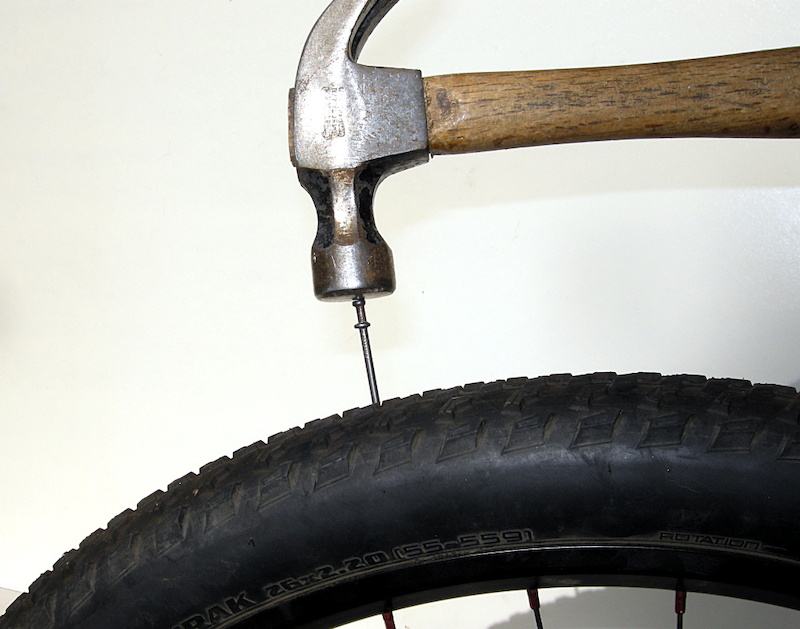 That way, you can inspect the tire in and out and determine where and how much damage the screw has done.
That way, you can inspect the tire in and out and determine where and how much damage the screw has done.
Be aware that any damage to the tire wall is unrepairable. Only punctures on the tread can be repaired.
Below are the general steps to repair a tire that has been punctured by a screw, nail, or other sharp objects:
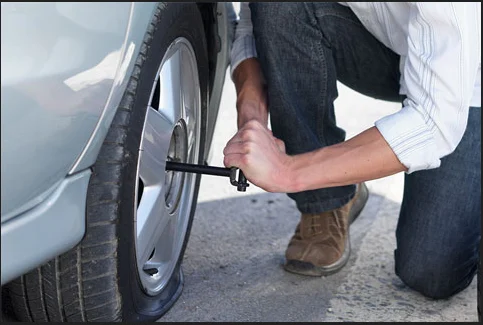 Ensure that half of the hole is covered by the patch.
Ensure that half of the hole is covered by the patch.Below are the general guidelines for repairing screw-punctured tires:
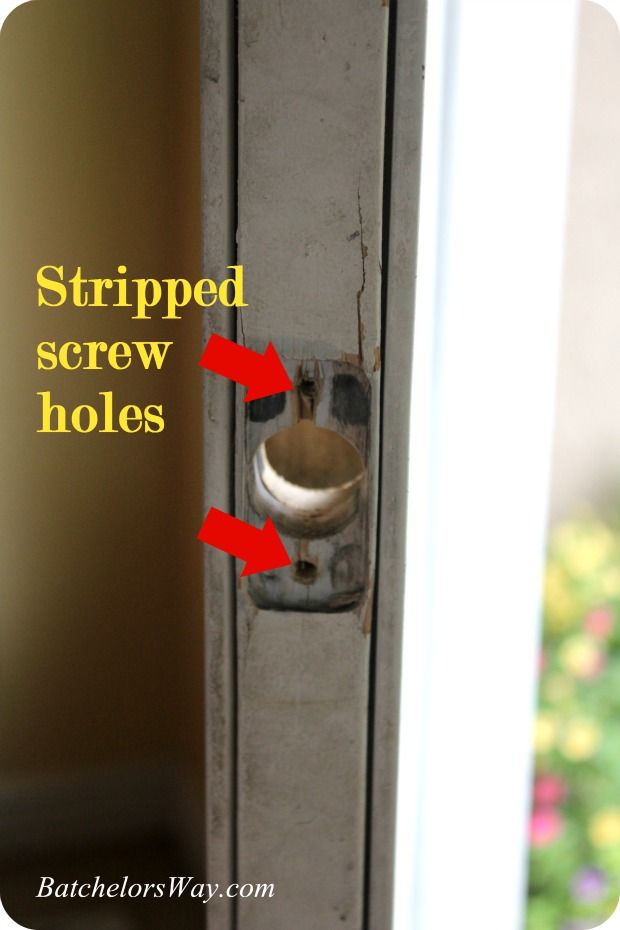
 This void will allow moisture to enter the tire body, which will eventually corrode its steel belts.
This void will allow moisture to enter the tire body, which will eventually corrode its steel belts.What Is the Fast Way to Deflate a Tire?
Your most immediate worry, if a screw punctures your tire, is the loss of air pressure. However, if the screw is not immediately removed from the tire, the puncture area will be unstable. It will eventually lead to the separation of the tire tread.
If you insist on driving your car with a tire punctured by a screw, it may result in more costly damage. The possibility of a blowout is very high if the puncture is located on the tire’s sidewall. This could even lead to more disastrous consequences.
Some car owners have driven their cars for 3 weeks with their tires punctured by a nail in the tread center section. There can be a screw in the tire and no leak if the screw plugs the hole perfectly. If the puncture is at the sidewall or close to it, a tire could not have lasted that long.
If the puncture is at the sidewall or close to it, a tire could not have lasted that long.
It really depends on the location of the puncture. If the screw is tiny, perhaps you will be able to go around driving for weeks without noticing any change in your tire pressure. However, if the screw is big, your tires could go flat anytime.
The best thing to do is to have the puncture fixed right away – if you can fix it. But if you can’t repair it, there is no other alternative but to buy a new one. It’s better than meeting an accident while you are driving with a questionable tire on your wheel.
Repairing the puncture is not that costly. Generally, the cost will be anywhere between $10 and $20. Some tire sellers would do it for free if you bought your tires from them.
It is also possible to do it on your own if you have the know-how and have the proper equipment and tools to do the job. But since it costs a minimal amount, have it done at the nearest tire repair shop.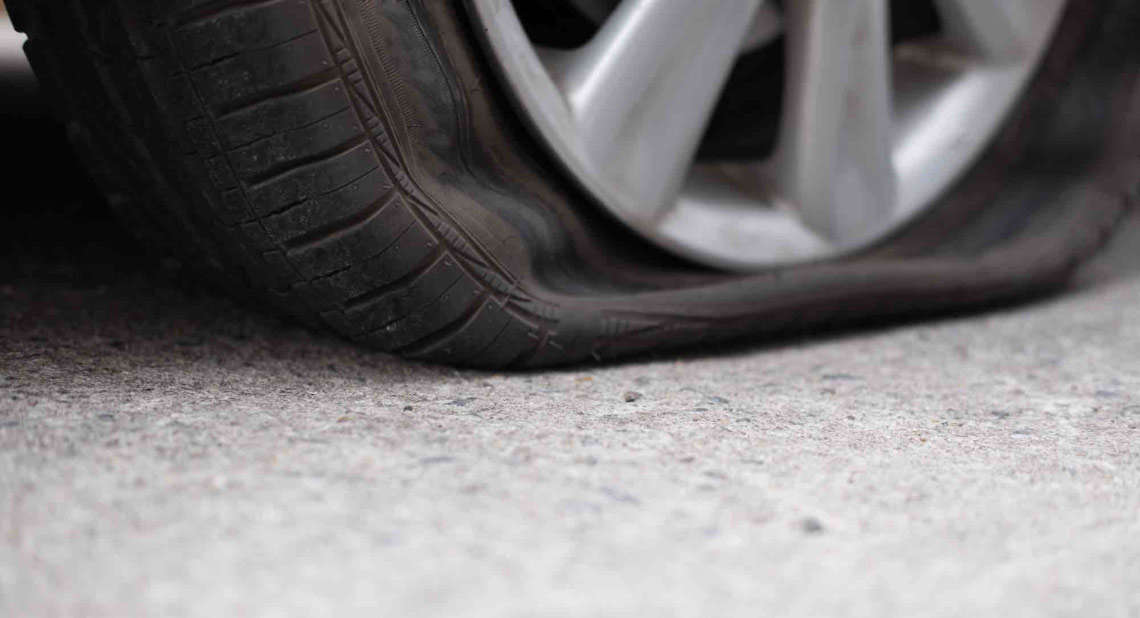
If the screw is on the tire’s sidewall or near to it, you will need to replace the tire soon. But if the puncture is on the top of the tread, you may still repair the tire by removing the screw and patching or vulcanizing the hole.
It may take a few days before you need to add air to your tire. To avoid this situation, check your tires regularly. Make sure that no sharp items are embedded in the tires. It is easier to remove a screw that has not deeply punctured the rubber rather than a screw that has been there for weeks and months.
Related reading:
Nail in Tire [How to Repair? What to Do?]
Cost to Patch a Tire
Causes of the Tire Pressure Sensor Fault Warning
Low Tire Pressure Light On But Tires Are Fine
When you have a screw in your tire, it can be a real pain to get it fixed. You may not know what to do, or where to go.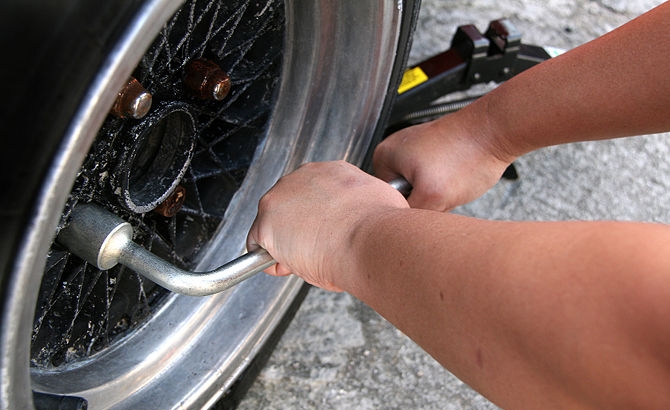
In this blog post, we’ll discuss what you should do if you have a screw in your tire. We will also provide information on where you can go to get your tire fixed.
When you have a screw in your tire, the first thing you should do is pull out the screw with a pair of pliers. Then, use a tire repair kit to thread a piece of tire string into the hole, and get it sealed.
To repair your tire, you will need a tire replacement kit found in the back of your car, as well as a puncture repair kit. The following table shows you all the tools you’ll need for the job.
Once you have all of the necessary tools and supplies, you can begin repairing your tire. Here are the steps:
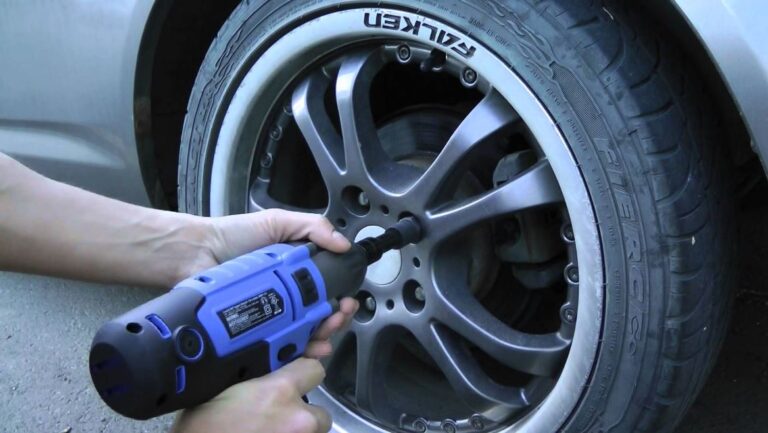
It is not safe to drive with a screw in your tire. The screw can cause the tire to leak air. This can lead to a blowout, which can be very dangerous. If you must drive with a screw in your tire, make sure to keep an eye on the pressure and stop as soon as possible to have the tire repaired.
A screw can damage a tire in several ways. First, the screw can cause the tire to leak air. This can lead to a blowout, which can be very dangerous.
This can lead to a blowout, which can be very dangerous.
Second, the screw can become lodged in the tread of the tire. This can cause uneven wear and may eventually lead to a blowout.
Third, the screw can damage the sidewall of the tire. This can cause the tire to leak air or may eventually lead to a blowout. All of these scenarios are dangerous and should be avoided.
In case the tire is damaged beyond repair, you will need to replace it. If the damage is minor, you can have the tire repaired. A qualified mechanic will be able to tell you if your tire needs to be replaced or repaired.
But if the screw is on the side of the tire, it can be repaired using a patch, and if the screw is in the tread, it will need to be plugged.
Tire sealants are a quick and easy way to fix a punctured tire. They work by sealing the hole in the tire. This prevents air from escaping and keeps the tire inflated. You can purchase tire sealants at most auto parts stores.
You can purchase tire sealants at most auto parts stores.
To use a tire sealant, simply follow the instructions on the bottle. Most tire sealants will require you to remove the valve stem from the tire. Once the sealant is in the tire, replace the valve stem and inflate the tire. The tire sealant will work its way into the hole and seal it.
It is important to note that tire sealants are a temporary fix. They are not meant to be used as a permanent solution. You should take your car to a qualified mechanic as soon as possible to have the tire repaired or replaced.
Most punctures can be repaired, but there are some that cannot. If the puncture is in the sidewall of the tire, it cannot be repaired. If the puncture is in the tread and is less than ¼ inch, it can be repaired. Any puncture larger than ¼ inch will require a new tire.
Punctures in the sidewall of the tire cannot be repaired while those in the tread of the tire that is less than ¼ inch can be repaired.
It only takes a screw that is ¼ inch long to puncture a tire. This is why it is so important to be diligent about checking your tires for any objects that may be lodged in them.
In case you have a choice, always opt for patching the tire over plugging it. Patching the tire will create a stronger seal and is less likely to cause further damage.
However, not all punctures can be patched so if the puncture is in the sidewall of the tire, you will need to choose another option.
Yes, plugs are safe for tires. They have been used to repair punctured tires for many years. However, they are not meant to be a permanent fix. You should take your car to a qualified mechanic as soon as possible after plugging your tire.
Yes, a plugged tire can blowout. This is why it is so important to keep an eye on the pressure of your tires after you have had one repaired.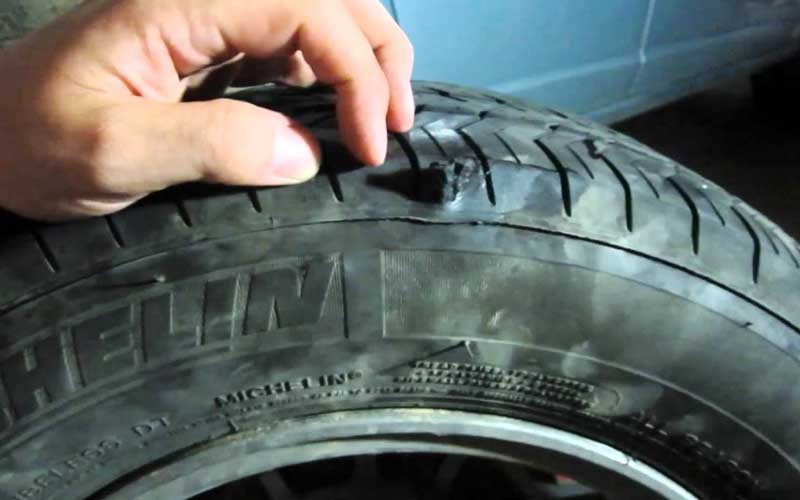 If you notice the pressure starting to drop, pull over and call for help.
If you notice the pressure starting to drop, pull over and call for help.
The cost to repair a tire with a screw in it will depend on the extent of the damage. If the puncture is in the sidewall, the tire will need to be replaced. If the puncture is in the tread and is less than ¼ inch, it can be repaired.
The cost of repairing a tire will vary depending on the type of tire and the location of the puncture. You can expect to pay between $30 and $60 to have a tire repaired.
As you can see, there are two different ways that you can fix a screw in your tire. You can either remove the screw and take the tire to a qualified mechanic, or you can plug the tire.
Both of these methods are effective and will allow you to continue on your way. If you have any questions or concerns, feel free to contact a qualified mechanic. They will be able to help you choose the best option for your situation.
Here are some more articles for you to check out:
What Causes A Bubble In A Tire?
Why Do Tires Blow Out?
What Does the T or H Mean on Tires?
adv.rbc.ru
adv.rbc.ru
adv.rbc.ru
Autonews
TV channel
Pro
Investments
Events
+
New economy
Trends
Real estate
Sport
Style
National projects
City
Crypto
Debating club
Research
Credit ratings
Franchises
Newspaper
Special projects St.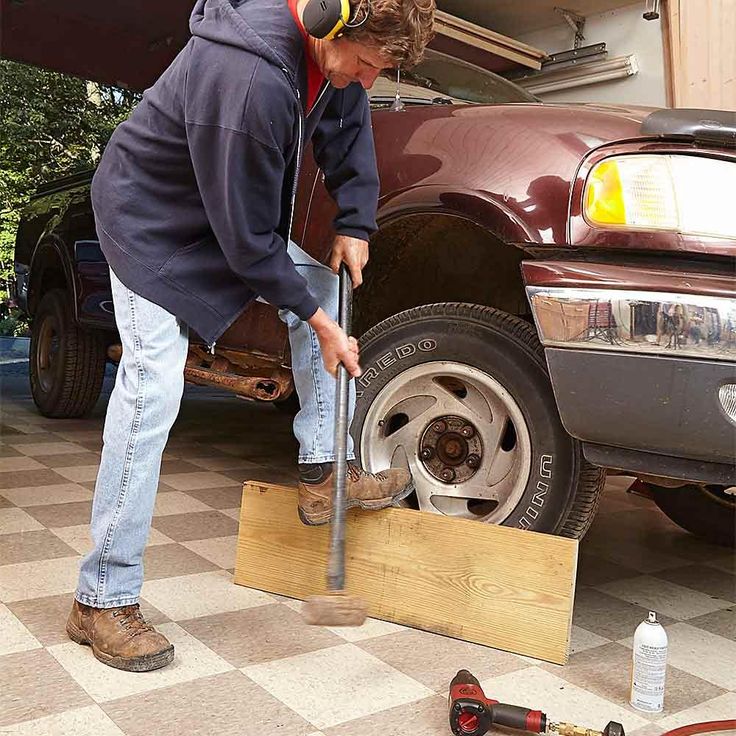 Petersburg
Petersburg
Conferences St. Petersburg
Special projects
Checking counterparties
Library
Podcasts
ESG index
Politics
Economy
Business
Technology and media
Finance
RBC CompanyRBC Life
adv.rbc.ru
Photo: Mikhail Tereshchenko / TASS
adv.rbc.ru
See also
Nail, rebar or sharp stone - sometimes you can damage a tire almost from scratch. First of all, the scale of damage is important, and often rubber can still be repaired.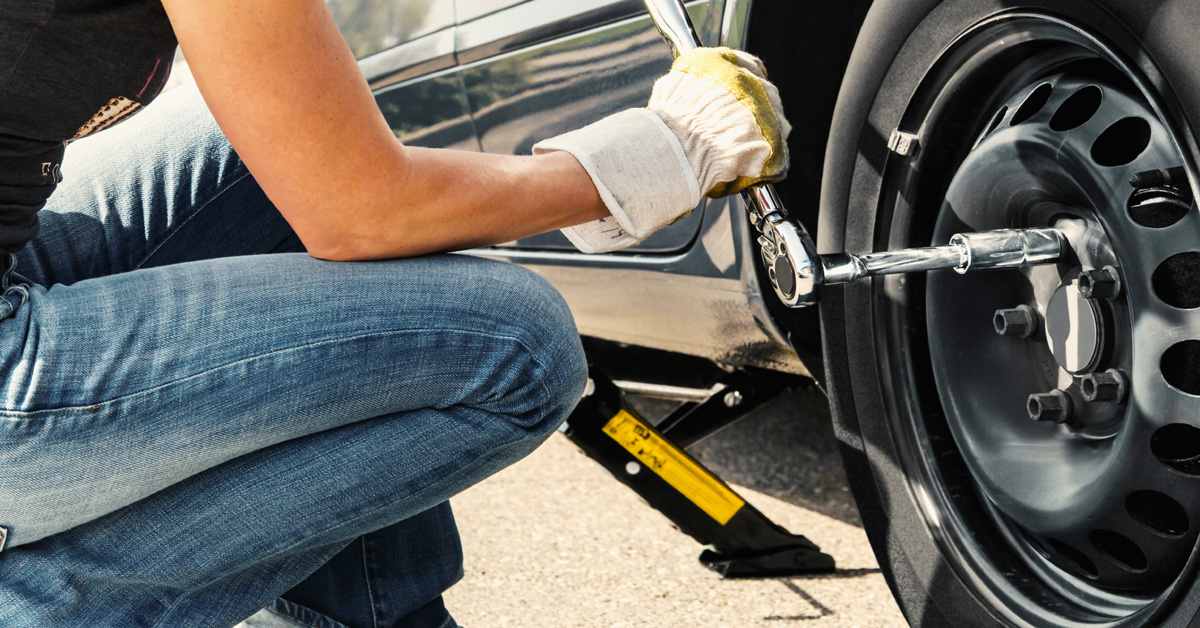 Most often, motorists turn to tire shops for repairs in the middle of autumn or spring - just in the season of replacing summer tires with winter tires and vice versa. In order not to stand in lines, it is worth knowing exactly when to go to the tire shop and when to go to the store.
Most often, motorists turn to tire shops for repairs in the middle of autumn or spring - just in the season of replacing summer tires with winter tires and vice versa. In order not to stand in lines, it is worth knowing exactly when to go to the tire shop and when to go to the store.
The most common "injury" to rubber is a puncture, and it can most often be repaired. Professionals in the nearest service will do it much faster, and your hands will remain clean. But if the puncture caught you in a deserted place, and there is a pump and a tire repair kit with harnesses in the trunk, you can patch up the tire yourself. Most often, when repairing the front tires, the wheel can not even be removed, it is enough to turn the steering wheel in the right direction and find the puncture site.
First, the hole is cleaned with a helical awl, the repair harness is smeared with glue and tucked into the eye of the awl, after which it is inserted into the tire hole. With a sharp movement, the tool is removed, and the tourniquet remains inside and securely clogs the hole. The tails are cut with a knife, but it is recommended to leave about 20 mm. After that, the tire can be inflated and the pressure checked.
The tails are cut with a knife, but it is recommended to leave about 20 mm. After that, the tire can be inflated and the pressure checked.
Repair with tourniquets is not considered long-term, because after some time they dry out and begin to let air through. A more advanced puncture repair method is vulcanization. The hole is sealed with an elastic patch, and the funnel at the puncture site is filled with a special compound. A vulcanizer is put on top, which heats the patch and solders the excess.
Under service conditions, the puncture is also repaired with cord fungus. The puncture site is processed and drilled to roughen. Everything is smeared with glue, after which a fungus is introduced from the inside of the tire, its cap is rolled, and the excess legs are cut off from the outside.
Photo: PA Images / TASS
A puncture can also be repaired with sealant. Many car manufacturers with run flat tubeless tires put compressor repair kits in the car instead of a spare tire - a bottle of pressurized sealant.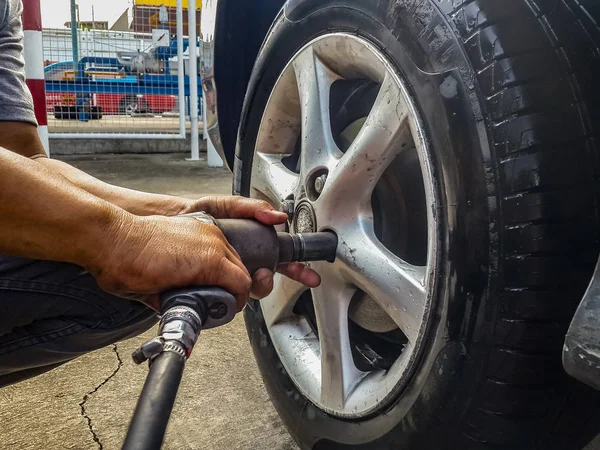 The car is raised on a jack, after which the sealant is pumped into the damaged wheel through the nipple. Next, you need to spin the wheel and pump it up. After repair, the car should be driven a couple of hundred meters to check the tightness of the tire. If it has not recovered, the procedure is repeated.
The car is raised on a jack, after which the sealant is pumped into the damaged wheel through the nipple. Next, you need to spin the wheel and pump it up. After repair, the car should be driven a couple of hundred meters to check the tightness of the tire. If it has not recovered, the procedure is repeated.
It happens that a self-tapping screw or a nail closes the hole in the tire, remaining inside. Do not rush to pull it out - until the pressure drops, you can safely get to the service for vulcanization. Sometimes the wheel begins to blow off a few weeks after the self-tapping screw got into it. Therefore, it is better to check tire pressure periodically, and if the pressure sensor lights up, you should at least visually inspect the tire for a nail head.
A bump or bulge most often occurs on the side of a tire after hitting an obstacle or hitting a hole at speed. From the impact, the sidewall carcass threads are damaged, the tire ceases to hold the load and pressure, swelling appears. Any small bump eventually turns into a larger one, and with such a defect, the wheel can burst at any time. This is a direct safety hazard because a sudden flat tire can cause loss of control and a road accident.
Any small bump eventually turns into a larger one, and with such a defect, the wheel can burst at any time. This is a direct safety hazard because a sudden flat tire can cause loss of control and a road accident.
Some bulges can be repaired, but no patch will ever restore a tire to factory stiffness. The ideal option in this case is to replace the tire. If a hernia has appeared on the tread, then you can extend the life of the tire with the help of cord patches - ready-to-use patches with an adhesive layer. But if swelling is found on the sidewall, the likelihood of repair is minimal, the wheel is easier to change. Blisters on low profile tires are generally not repairable.
Only car service professionals can repair a side cut. Cord patches will be needed to repair the damage, but after some time the wheel will still have to be changed. This method will work only if the gap is not in the shoulder area of the tire, then no one will repair it.
In general, cuts or punctures, unlike punctures, are considered non-repairable, since the integrity of the frame is violated. And breakdowns do occur on the go, when the tire abruptly loses pressure and has time to make only a few turns “on the rims” before it comes to a complete stop. In this situation, the cord breaks and the layers of the tire are destroyed. Even if it is possible to close the hole, it is not recommended to use such a weakened tire.
And breakdowns do occur on the go, when the tire abruptly loses pressure and has time to make only a few turns “on the rims” before it comes to a complete stop. In this situation, the cord breaks and the layers of the tire are destroyed. Even if it is possible to close the hole, it is not recommended to use such a weakened tire.
Photo: Mikhail Pletsky / Russian Look
Cracks, sidewall abrasions and unprofessional tire fitting can also lead to tire problems. Cracks can occur as a result of improper storage of tires. Their danger is that moisture begins to flow to the cord, and this already renders the frame unusable. Air can also escape through cracks. Cracks cannot be repaired and tires will not last long. A tire with cracks is deformed, blistered, and may even break while driving.
Rubbing against curbs or driving on uneven roadsides can damage the tire sidewall. When driving like this, it is worth inspecting the tires for damage regularly. If a slight wear is found, the wheels can be swapped, which will slightly extend their service life and allow you to delay the purchase of new ones.
Improper fitting can damage the tire bead. In this case, the tire will lose its geometry and sit on a disc with a bevel, “eights” will be visible during rotation, and the driver will feel vibration while driving. It is impossible to repair this defect, the wheel must be changed as soon as possible, otherwise there is a risk of damage to the suspension.
How to Tires
adv.rbc.ru
adv.rbc.ru
Author: Kirill Savchenko
“Chief, you've got ten minutes of work to do, the hole is nothing! Well, come up with something .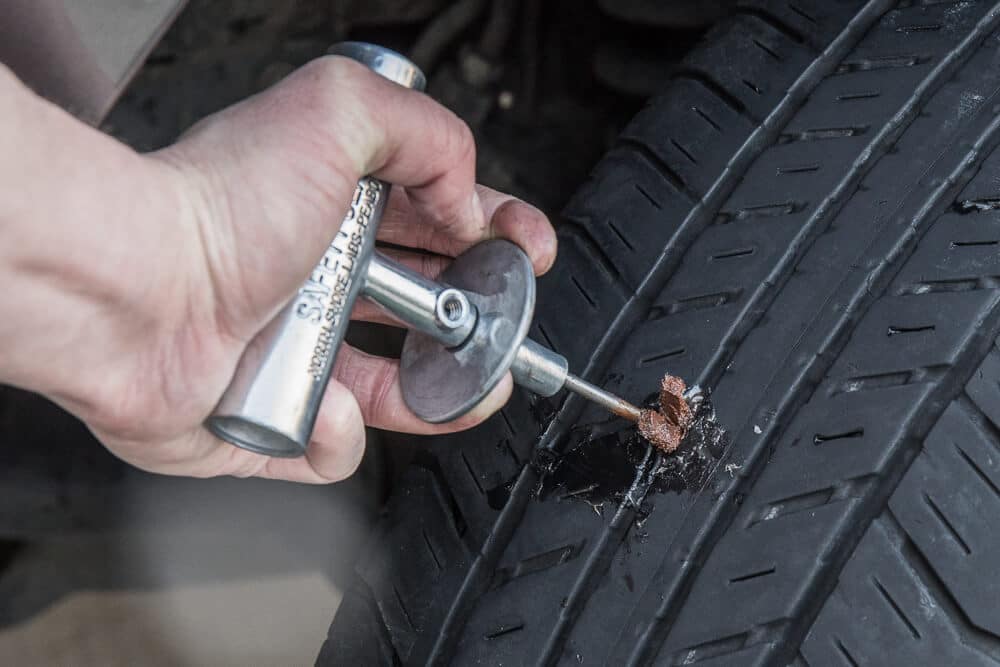 .. ”Every tire fitter has probably heard such words. Alas, not all tire damage can be repaired...
.. ”Every tire fitter has probably heard such words. Alas, not all tire damage can be repaired...
But the situation can be reversed. A wheel pierced by protruding reinforcement may be repairable, while a small cut will write off the tire for scrap. Experienced tire fitters believe that it all depends on the point of damage and the object that caused it.
Most often, drivers encounter punctures in the tread area of a tire. It is not always possible to detect it immediately. If in the days of tires and chambers the wheel lost pressure at the slightest puncture, then tubeless tires are much more reliable in this regard. A nail or self-tapping screw usually closes the puncture site, preventing air from escaping quickly.
With such a "plug" you can sometimes drive for months. The tire can lose pressure minimally without arousing suspicion. At the same time, an attempt to pull out a noticed nail on the way is likely to turn into a problem. In this case, the only recommendation is to pull out a foreign object only in a tire shop and repair the wheel.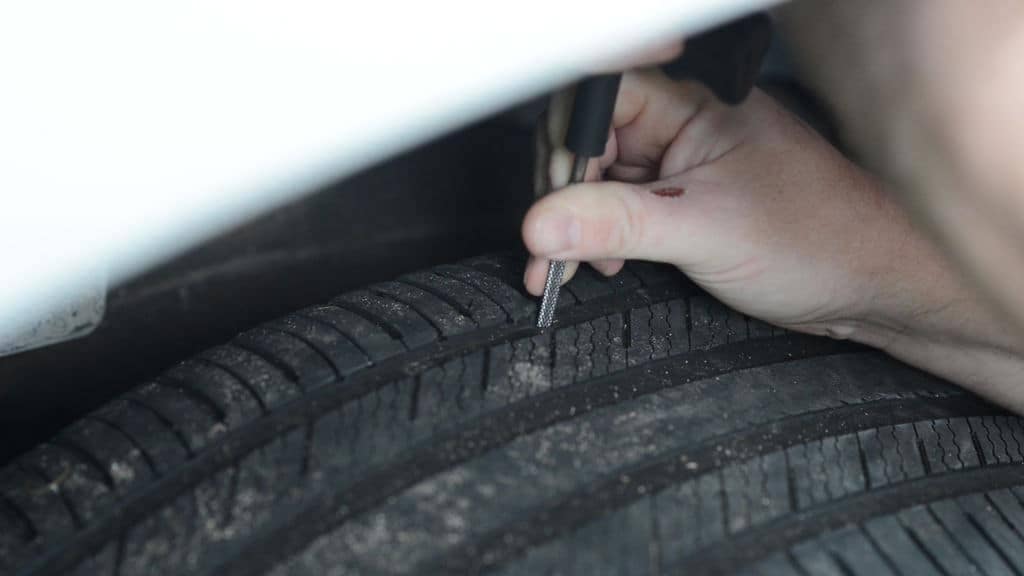
In most cases, tread punctures are repaired either with special harnesses (some for temporary use, some for permanent use) or patches on the inside of the tire. Even damage caused by massive pins can be repaired. The main thing is that a piece of the tire along with the cord is not torn out.
In the latter case, the hole is filled with raw rubber, vulcanized, and a special cord patch is placed on the inside. But this will only be a temporary measure. In addition, such repairs are not cheap, and purchasing a new tire can be both more profitable and safer.
In addition to the plaster, cord “fungi” are also used. Lubricated with glue, the “fungus” is inserted into the puncture from the inside of the tire, then the excess part of the “leg” is cut off from the outside.
On the other hand, a cord patch can seriously help with side cuts. And car owners meet with them quite often. But here there are several nuances. In a roadside tire shop, the cut will most likely not heal. You need to contact a company with specialized equipment, primarily vulcanization.
You need to contact a company with specialized equipment, primarily vulcanization.
And one vulcanizer is indispensable here. Cord patches should be with a certain number of layers, designed for strictly defined damage sites and of a suitable size. And again we are talking about the nuances.
If the cut is in the shoulder area of the tire, then it is most often impossible to repair it qualitatively. The tire fitter who offered such a service is at great risk, even if he claims that he will weave a piece of new cord with his hands and vulcanize it. There are no miracles in this situation, but in any case, the last word belongs to an experienced specialist.
Side cuts on low profile tires with a tread height of less than 50% of the width are poorly treated. That is why, in the case of using a car on roads with a possibility of tire damage, it is better to put those that are higher. They are much easier and cheaper to repair.
By the way, an injury that looks like a cut at first glance may not be one. If the sidewall of the wheel catches on something sharp, and a tear forms on the tire without damaging the cord, then this is called a pinch. It does not carry momentary danger and does not require any complex repairs.
If the sidewall of the wheel catches on something sharp, and a tear forms on the tire without damaging the cord, then this is called a pinch. It does not carry momentary danger and does not require any complex repairs.
However, if a piece of rubber remains, then it is glued with ordinary superglue. If not, you will need raw rubber and a vulcanizer. It is impossible to leave the cord bare: under the influence of moisture, it can collapse, which will lead to the complete loss of the tire.
One of the most common and fatal tire defects is swelling or simply "herniation". Despite the absence of open damage to the rubber, such a wheel will be scrapped ahead of schedule. The fact is that when the sidewall is hit, the threads of the tire carcass break. Even if the swelling is very small, sooner or later the bump grows in size, and this is already fraught with an explosion of the wheel at speed.
However, some hernias can be repaired, but this is again a temporary measure. Masters can put cord patches even in the tread area. But only on condition that the distance from the sidewall to the swelling is more than 40 mm. If less, the tire is not subject to further operation. By the way, on low-profile tires, hernias, for the most part, are not repairable - both on the tread and on the sidewalls.
Masters can put cord patches even in the tread area. But only on condition that the distance from the sidewall to the swelling is more than 40 mm. If less, the tire is not subject to further operation. By the way, on low-profile tires, hernias, for the most part, are not repairable - both on the tread and on the sidewalls.
One of the major tire problems is caused by unprofessional repairs. Moreover, the owner most often does not know about it. We are talking about damage to the bead ring, as a result of which the tire does not initially hold the specified pressure.
Eventually the bead ring begins to push out of the rim. At high speed or under heavy load, such a wheel can be disassembled, which again threatens the car with a loss of control.
This damage can be repaired provided that the wire ring or base is not damaged. Special technologies for such repairs are not provided, but experienced craftsmen use the so-called "cold" or chemical vulcanization using a two-component sealant.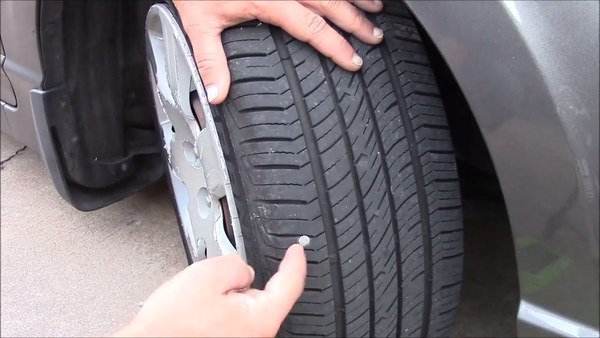 The resulting mass covers places where there is no rubber on the bead ring. The main condition is to wait three days before mounting the tire on the disc.
The resulting mass covers places where there is no rubber on the bead ring. The main condition is to wait three days before mounting the tire on the disc.
As for Run Flat tires, according to the instructions of most manufacturers, they cannot be repaired. In extreme cases, you can use a bottle of special pressurized sealant that comes as a repair kit.
Comment of the expert of the company "SHINSERVICE":
Alexander Golubev
expert "SHINSERVICE"
First of all, we recall that most tire manufacturers do not recognize handicraft tire repair. It is considered a sign of external influence and changes in the design of the tire. Such a tire automatically voids the warranty. This does not happen if tire repairs are carried out in specialized, authorized tire brands services. Note that almost all major tire brands give their own extended warranty, according to which in most cases the repair is free, at a discount, or the product is generally replaced with a similar one, depending on the conditions of the program.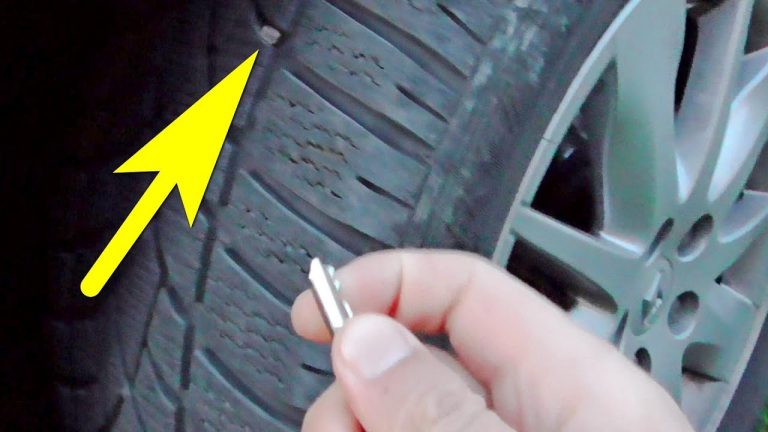
Based on our experience, we can say that in most cases damage in the bead area and in the shoulder area is not repairable.
I would also like to draw your attention to the fact that most low-profile tires have high speed indexes (V and above), and even after professional repair they will not be able to operate in the same modes without restrictions. Therefore, we strongly recommend changing the tire in all cases, except for tread punctures.
practice tires and wheels
Test drives / Test drive Haval Dargo vs Mitsubishi Outlander: the dog is barking, the stranger is coming In the Haval dealership in the south of Moscow, life is in full swing: buyers look at cars, communicate with managers and sign some papers. While I was waiting for the test Dargo, the same cross... 17750 7 205 13.